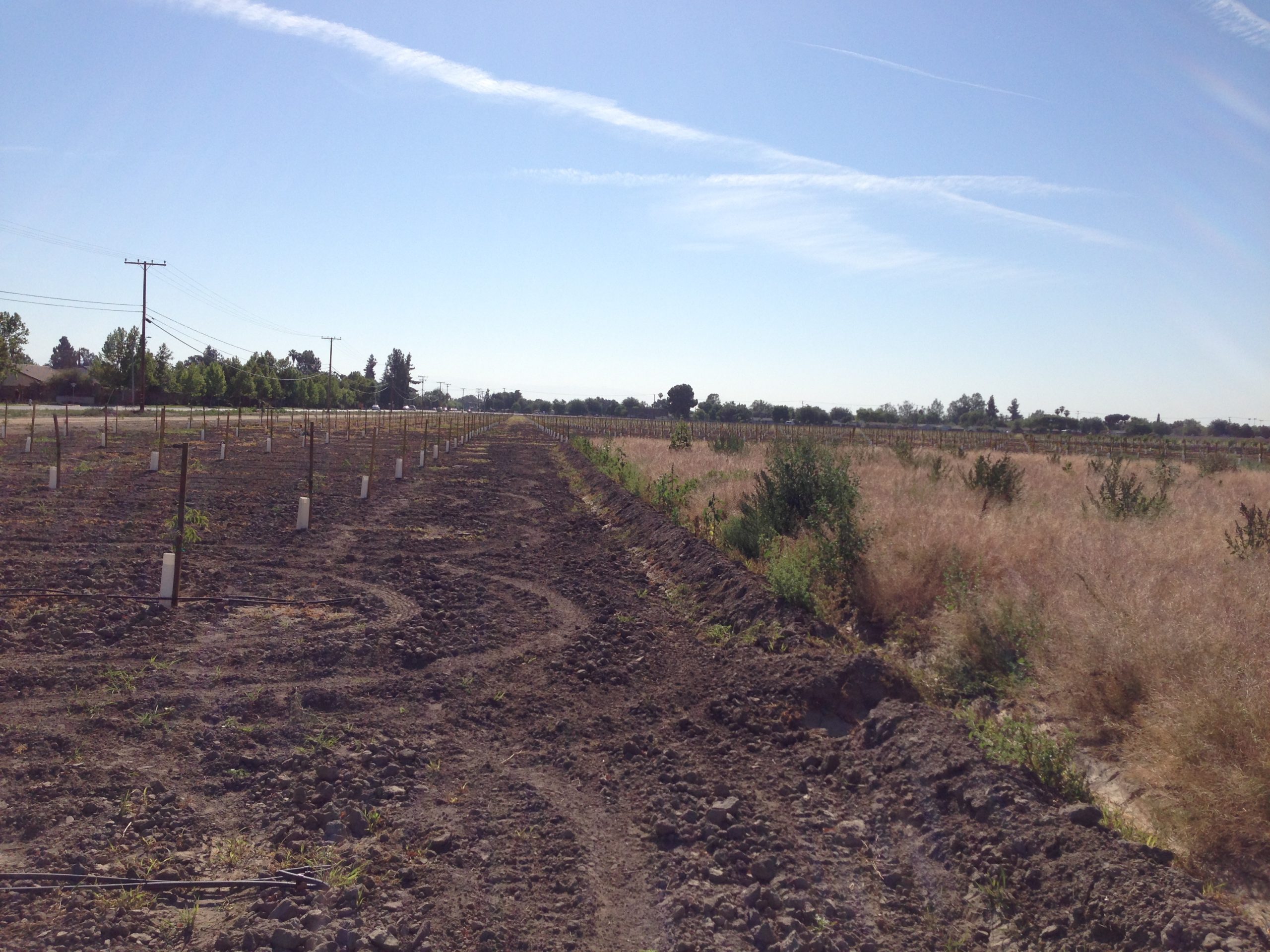Fall 2013
The Conservancy is in the process of acquiring a 1.33- acre prehistoric habitation mound and burial area located in the San Joaquin Valley in the town of Hanford, California. The site, known by the archaeological designation CA-KIN-4, was initially recorded in 1939 by archaeologists Gordon W. Hewes and William C. Massey, who noted obsidian and chert fragments, an abalone pendant, and fragments of human remains.
In late 2012, while an orchard of almond and pistachio trees was being planted, more human remains were discovered. This discovery stopped the tree planting while the tribe surveyed the area. They also found obsidian and chert flakes, several biface fragments, an olivella shell bead, fire-cracked rock, and a bowl mortar fragment.
Prehistoric habitation mounds, which were once common in this part of California, are now rare. Donald Souza, who owns the land the site sits on, hired archaeologist Alex DeGeorgey of Alta Archaeological Consulting to conduct an intensive surface survey to further establish the nature, extent, and condition of the site. Though CA-KIN-4 has been disturbed by decades of agricultural activities that have altered the size and height of the mound, DeGeorgey wrote in a report on his findings that “it is highly likely that significant intact deposits are still present within the mound area.” The age of the site is unknown. After surveying the site, DeGeorgey referred Souza to the Conservancy in order to preserve the mound.
Because KIN-4 has been disturbed, the Conservancy hired archaeologist Greg White of Subterra Consulting to assess its importance and research potential. White had earlier evaluated another nearby mound site, which the Conservancy acquired and named the Redtfeldt Archaeological Preserve. White noted the rarity of the two nearby mounds, and he focused on their collective value to researchers.
In his report to the Conservancy, White wrote, “in my opinion KIN-4 may represent a unique resource.” He added that he thinks the site is less than 600 years old, in which case it “may contain an assemblage distinctly different from (Redtfeldt), and would represent a useful complement to (Redtfeldt) in the sense that the two sites would represent a continuous chronological series….”
In July of 2013, the Conservancy purchased the site from Souza, who wanted to see it preserved and professionally managed. CA-KIN-4 has the potential to yield information that can fill in missing gaps and support existing data regarding the prehistory of the area.



